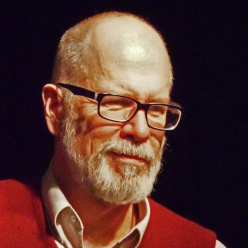Recently at Mopco we’ve been rehearsing Spontaneous Broadway, a show that consists of improvised songs in the first act, and a long form musical built around a reprise of one of those songs in the second.
It’s a show that requires the impossible, which of course is why improvisers love it.Having little more than a handful of ragtag costumes and an agreed-upon title and opening location to go on, the cast must write, edit, direct and perform a musical play in real time, in front of the opening night audience.
It’s a form that brings out the driver in some of us. And the wimper, and the bridger.
If you don’t know what the heck I am talking about, apologies. Driving= moving the action forward by overwhelming the offers of your partners, and therefore blocking them. Wimping= not doing anything for fear of making a mistake. Bridging= putting off an inevitable outcome for fear of the unknown results—“I am going to shoot!….some day…..really! I mean it…..” If you are going to shoot, shoot. If you enter a scene, do something, simply and definitively. And if your partner makes an offer, don’t ignore it because you have a better one…the audience will sense that conflict/tension and become uncomfortable.
So, the other night in rehearsal we were discussing driving. Kat Koppett (Mopco co-director and creator of the form Spontaneous Broadway) had this to say about driving: “When you feel as if you know exactly what should happen, and feel compelled to make it happen—don’t. Chances are you are wrong, and someone else, who actually does know, will do the right thing if you let them.”
Zen and the art of improv, summed up by Kat Koppett.
Someone is thinking: but–if everyone followed that advice, we would never do anything, right? Nope. Kat went on to say (Kat, please forgive the paraphrase)”When you feel that way, it’s because you are writing instead of listening. We must listen to each other, and be scrupulous about yes-anding the offers that are out there—that way, the story goes forward organically, and the audience is amazed.”
So, the driver’s dilemma is: I know I know what should happen, but I know (because Kat told me) I am wrong. But…but…but…. Like a creaky overloaded computer tricked by Mr. Spock into meltdown, this improviser freezes, and essentially leaves the show. (Wimping/bridging and driving being, after all, two sides of the same coin.)
What’s the prescription? Same old thing. Listen. Relax. Breathe. Create no action; rather, allow yourself to be moved to action by the action of others–in the moment, not after planning. And don’t be fooled: Even if you only plan for five seconds, you are still out of the now, and therefore probably not right about what you intend to put out there. Look to the person who is totally in the moment, and let yourself be changed by them, in the moment.
A post to be written soon: How do I know when my partner is totally in the moment, if I’m not? hmmmmm……..
It’s very, very simple. Easy? No. But simple.
